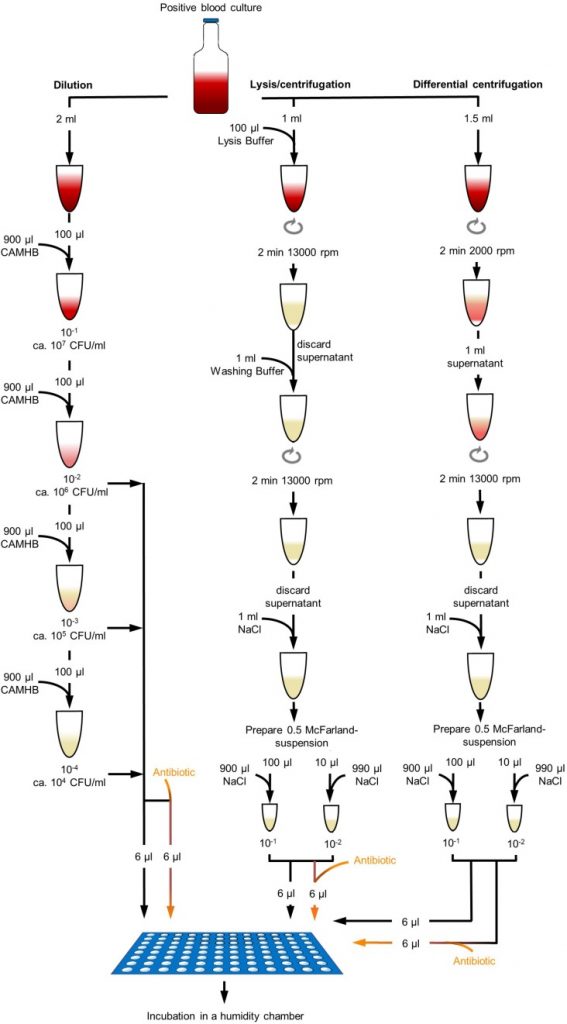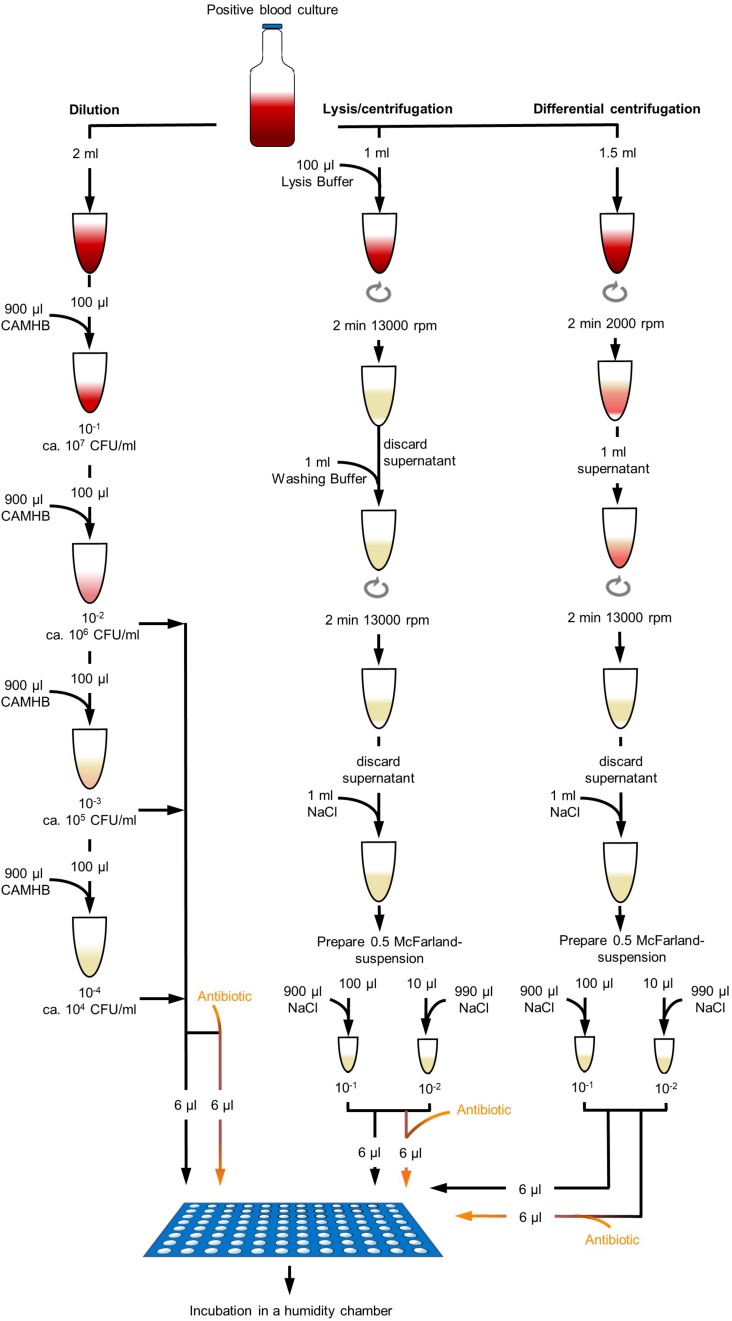Matrix-assisted laser desorption/ionization time-of-flight-mass spectrometry (MALDI-TOF MS)-based direct-on-target microdroplet progress assay (DOT-MGA) was not too long ago described as a novel methodology of phenotypic antimicrobial susceptibility testing (AST).
Here, we developed the appliance of MALDI-TOF MS-based DOT-MGA for Gram-positive micro organism together with AST from agar cultures and instantly from optimistic blood cultures (BCs) utilizing the detection of methicillin resistance as instance.
Consecutively collected, a complete of 14 methicillin-resistant Staphylococcus aureus (MRSA) and 14 methicillin-susceptible S. aureus (MSSA) medical isolates have been included. Furthermore, a set of MRSA problem strains comprising completely different SCCmec sorts, mec genes, and spa sorts was examined.
Blood samples have been spiked with MRSA and MSSA and optimistic BC broth processed by three completely different strategies: serial dilution of BC broth, lysis/centrifugation, and differential centrifugation.
Processed BC broth was instantly used for speedy AST utilizing DOT-MGA. Droplets of 6 μl with and with out cefoxitin on the EUCAST breakpoint focus have been noticed in triplicates onto the floor of a MALDI goal.
Targets have been incubated in a humidity chamber, adopted by medium elimination and on-target protein extraction with formic acid earlier than including matrix with an inner commonplace as a high quality management (QC). Spectra have been acquired and evaluated utilizing MALDI Biotyper software program.
First, exams have been thought of as legitimate, if the expansion management achieved an identification rating of ≥1.7. For legitimate exams, similar rating criterion was used for resistant isolates when incubated with cefoxitin. An identification rating <1.7 after incubation with cefoxitin outlined prone isolates.
On-target protein extraction utilizing formic acid significantly improved detection of methicillin resistance in S. aureus and DOT-MGA confirmed possible outcomes for AST from agar cultures after Four h incubation time.
Comparing the completely different processing strategies of optimistic BC broth, lysis/centrifugation methodology with a remaining dilution step 10-1 of the 0.5 McFarland suspension resulted in finest take a look at efficiency after Four h incubation time.
Overall, 96.4% take a look at validity, 100% sensitivity, and 100% specificity have been achieved for detection of methicillin resistance in medical isolates. All strains of the MRSA problem assortment have been efficiently examined as methicillin-resistant.
This first examine on Gram-positive organisms confirmed feasibility and accuracy of MALDI-TOF MS-based DOT-MGA for speedy AST of S. aureus from agar cultures and instantly from optimistic BCs.

Nano-etched fused-silica capillary used for on-line preconcentration and electrophoretic separation of bacteriophages from massive blood pattern volumes with off-line MALDI-TOF mass spectrometry identification.
The properties of staphylococcal phages from the Siphoviridae, Podoviridae, and Myoviridae households have been monitored utilizing capillary electrophoretic strategies on fused-silica capillaries with completely different morphology of floor roughness.
Isoelectric factors of the examined phages have been decided by capillary isoelectric focusing in the unique, clean fused-silica capillary, and they ranged from 3.30 to three.85. For capillary electrophoresis of phages, fused-silica capillaries with the “pock” and “cone” roughened floor sorts have been ready by etching an element of the capillary with supercritical water.
The finest decision of the person phages (to vary from 3.2 to 4.6) was achieved with the “cone” surface-type fused-silica capillary.
Direct utility of phage K1/420 on the an infection web site, represented by human plasma or full blood spiked with Staphylococcus aureus, was on-line monitored by micellar electrokinetic chromatography. The phage particles have been dynamically adhered onto the roughened floor of the capillary from 10 μL of the ready pattern on the optimized stream price of 6.5 μL min-1. The restrict of detection was decided to be 104 phage particles.
The linearity of the calibration strains was characterised by the regression coefficient, R2 = 0.998. The relative commonplace deviation (RSD) of the height space, calculated from ten impartial measurements, was (±) 2%.
After evaluation, viability of the detected phages was verified by the modified “double-layer drop assay” methodology, and collected phage fractions have been concurrently off-line analyzed by matrix-assisted laser desorption/ionization time-of-flight mass spectrometry. Graphical summary.

